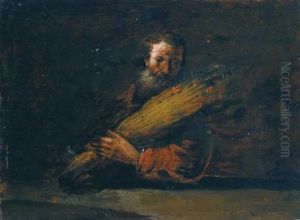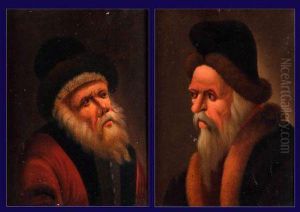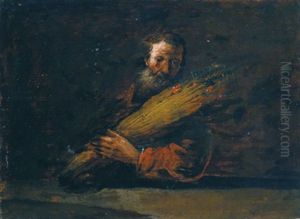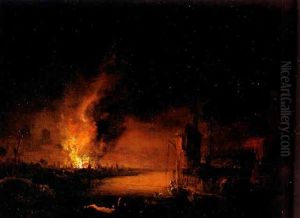Johann Georg Dietrich Paintings
Johann Georg Dietrich, also known as Georg Dietrich or Dietricy, was a German painter and etcher born in 1711 in Weimar, Thuringia. He is most notable for his landscape paintings, which reflect the influence of the Dutch 17th-century masters as well as the Italianate style prevalent during his time. Although not as widely recognized as some of his contemporaries, Dietrich contributed to the landscape genre in a manner that bridged the baroque sensibilities and the emerging sentiments of the Enlightenment.
Dietrich received his early training from his father, Johann Georg Dietrich Sr., who was also an artist. He further honed his skills under the guidance of various teachers, which included traveling to the Netherlands to study the works of the Dutch masters firsthand. This experience left a lasting impression on his style, as he adopted the fine detail, realistic lighting, and naturalistic settings typical of Dutch landscapes.
Returning to Germany, Dietrich settled in Dresden, where he became a part of the city's thriving artistic community. He was appointed as a court painter, a position that allowed him to work on significant commissions and contributed to his moderate fame during his lifetime. His works were recognized for their serene and idyllic qualities, often depicting the countryside around Saxony and incorporating classical ruins, an element that was popular among the art patrons of his time.
Despite his success, Dietrich's work was somewhat overshadowed by the larger movements of his era, such as the burgeoning Romanticism, which would come to dominate the aesthetic landscape shortly after his death. He passed away in 1774 in Dresden, leaving behind a body of work that has been appreciated more in retrospect for its contribution to the development of German landscape painting. His etchings and paintings can be found in various European art collections, serving as a testament to his skill and the transitional period of art history in which he lived.



